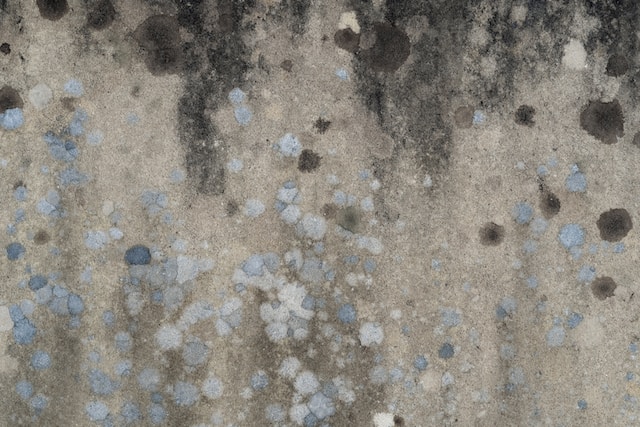Winter in the Pacific Northwest can be brutal for everyone: thick snow, rampant ice, and long periods of below-freezing temperatures aren’t just uncomfortable for people but dangerous for any building.
The winter season is especially hard on commercial buildings due to their size and complexity, leading to water damage issues.
As commercial property is your livelihood, it’s critical that you protect it from all dangers whenever possible. Follow these tips on how to prepare your commercial building for winter before winter conditions wreak havoc on your day-to-day operations.
Inspect Your HVAC System
Your HVAC system is a complex component of your building, making regular maintenance a must to ensure it is functioning properly. Before the temperature drops, perform a thorough inspection of your HVAC system to ensure that they are properly insulated and all components are working.
Replace anything that is broken and cover up external AC units to help insulate them from heavy snow. This is one of the simplest protective measures, but it can prevent costly repairs from swamped air conditioning units.
For added protection, have a technician install freeze protection devices. These kick on when temperatures drop and melt ice, preventing costly damage to internal systems.
Plumbing and Water Delivery Systems
Burst pipes are a common culprit of winter weather disasters. Ice formation is incredibly dangerous in pipes, as water expands when frozen. This can lead to leaks in building walls, which may even flow into the building’s foundation. Overhead leaks in ceilings could damage electrical systems, such as dripping into interior lighting and starting fires.
The subsequent damage can cost you thousands in repairs, not to mention a major headache, so you must think ahead and be proactive about potential plumbing risks.
Inspect Pipes and Drains for Damage Before Cold Weather
While you should always regularly inspect your plumbing and fire pumps, be sure to get a plumber in to thoroughly check out all your pipes as part of your winter preparations. Even small leaks during the winter months can lead to major water damage due to frozen pipes. Tighten or replace loose connections before winter sets in, and you’ll be well-prepared to counter leaks.
One of the best proactive measures is heat tape, which is attached to the exterior of a pipe to heat the water and avoid freezing. Many have their own thermostats and only click on when the temperature dips below a certain level for added energy efficiency.
Pipes and Sprinklers Freeze Protection
When you think of frozen pipes, you’re likely thinking of water overflow from sinks, but you also need to consider exterior faucets and sprinklers that you may use for landscaping purposes.
Before the cold season, drain all your sprinklers and garden hoses; bring them into sheds or storage areas to prevent them from freezing. You’ll also want to drain and seal up any external water tanks to avoid costly damages from ice.
Check Wall, Window, and Door Seals and Gaps
Drafty windows and doors are a major source of heat loss in the cold months; not only is the cold air uncomfortable for those standing near an entryway, but it can also greatly reduce energy efficiency and result in enormous bills. Invest in weather stripping for each window frame and doorway, and ensure that there are no drafts creeping through cracks in your walls that will need to be caulked.
However, the best insulation methods won’t help if your windows and doors are too old. As most windows and doors only last a maximum of 30 years, you may find it better to invest in new doors and windows for your commercial building. Choose windows that have an Energy Star rating for best results.
Don’t Forget Landscaping
Winter also leads to potential roof damage from falling tree branches that can’t withstand heavy snowfall; knocked-over trees can also be common culprits for power outages if they hit power lines. Have an arborist perform routine inspections of the trees on your commercial property, trimming back any branches that may fall on your building during the winter season.
While less of a risk, a damaged shrub can also scrape up against a commercial building, potentially destroying the siding, while frozen creeping vines may allow ice to infiltrate surfaces. Trim back vines and shrubs so they are well away from the building before cold weather arrives.
Prepare Slippery Surfaces for Freezing Temperatures
Slippery ice causes a major trip hazard on sidewalks and in parking lots. If a patron or employee falls on your property, you open yourself up to premises liability lawsuits or workers’ compensation claims, so it’s vital that you develop a plan to improve traction during the colder months.
Common ways to reduce slipperiness, in addition to ice removal like salting, is to spread grit, kitty litter, or sand across hazardous surfaces. Choose your substrate carefully to avoid potential damage to your walkways. Make sure you always have plenty of ice melt on hand for employees to use should they note a particularly icy area.
Examine The Roof and Gutters
It goes without saying that the roof is one of the most critical components of your building, and you need to ensure that it can withstand snow. Have a roofer come to inspect your roof for water damage and replace any broken shingles if necessary; it’s best to get this done before winter sets in, as it’s safer to work on roofs at this time.
Additionally, ice dams are a serious risk for gutters in a commercial building. When debris builds up in gutters, it makes it difficult for the ice to melt and flow through the downspouts; when this ice builds up, it can tear your gutters off the building.
As this allows water to pour down the siding and into the foundation, broken gutters are a serious risk to the structural integrity of your building. As you prepare your commercial building for winter, you should have the gutters cleaned out and install gutter guards.
Arrange Snow and Ice Removal Services
After you’ve taken care of these other elements, you need to prepare your commercial building for winter by arranging the necessary ice and snow removal services. This protects those visiting your premises from slipping and ensures regular access to your building.
Snow removal companies for commercial buildings typically work on a contract basis, and spots fill up fast. Get in touch with a snow plow company well before winter; make sure to ask whether ice removal is included or if this is an additional charge.
Protect Your Commercial Building with PacWest Restoration
Oregon is beautiful in winter, with a fairytale air thanks to the sparkling ice and shining snow. However, this same beauty can be dangerous if your commercial building hasn’t been properly winterproofed before the first snow arrives. It’s critical that you take care of your HVAC system, plumbing, roof, gutters, landscaping, and other structural elements before the first snowfall to prevent problems before they ever occur.
Mother Nature can be unpredictable; sometimes, even the most well-protected building still suffers from water damage due to snow and ice. Should this happen, get in touch with the experts at PacWest Restoration for professional assistance. We’ll help get your property back to normal as soon as possible so that you can return to business as usual.
Call us 24/7 at 503-746-6545, or contact us for water mitigation and fire damage restoration services. We’re a family-owned and operated company working throughout the greater Portland area to get businesses back to normal, providing great customer service and the highest industry standards in restoration.


